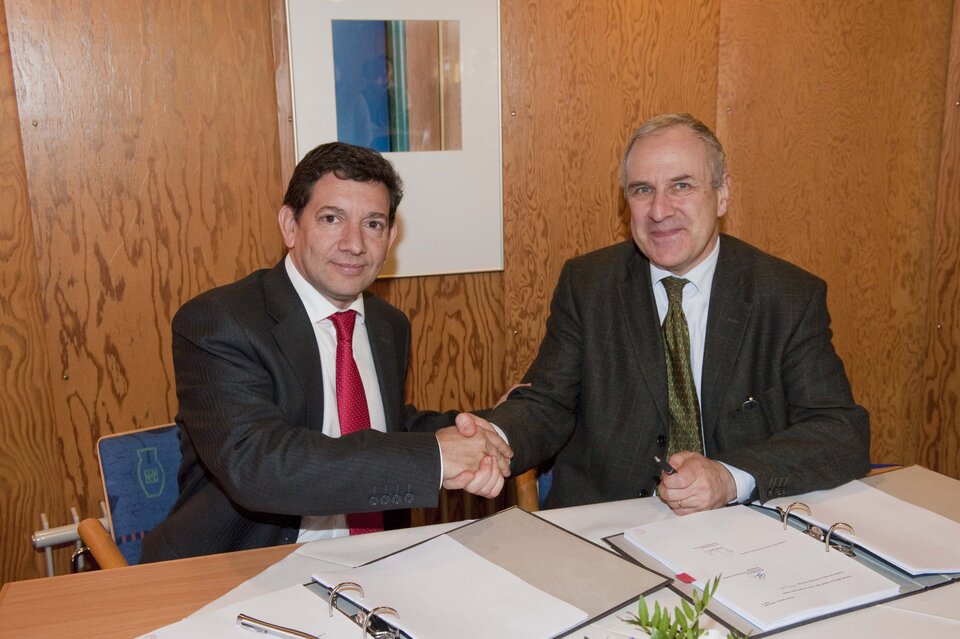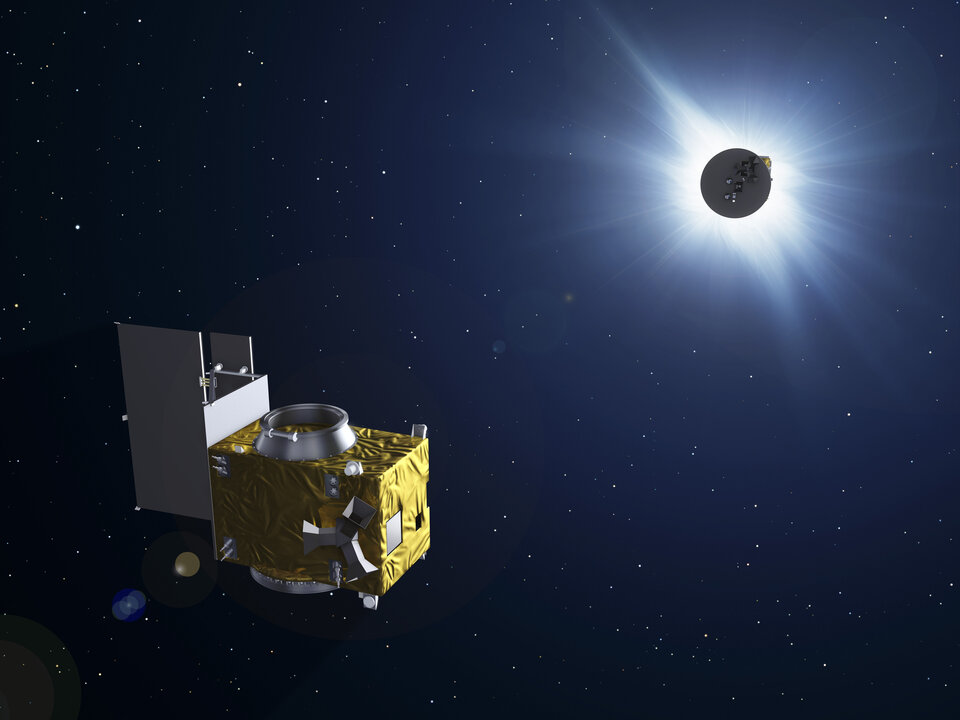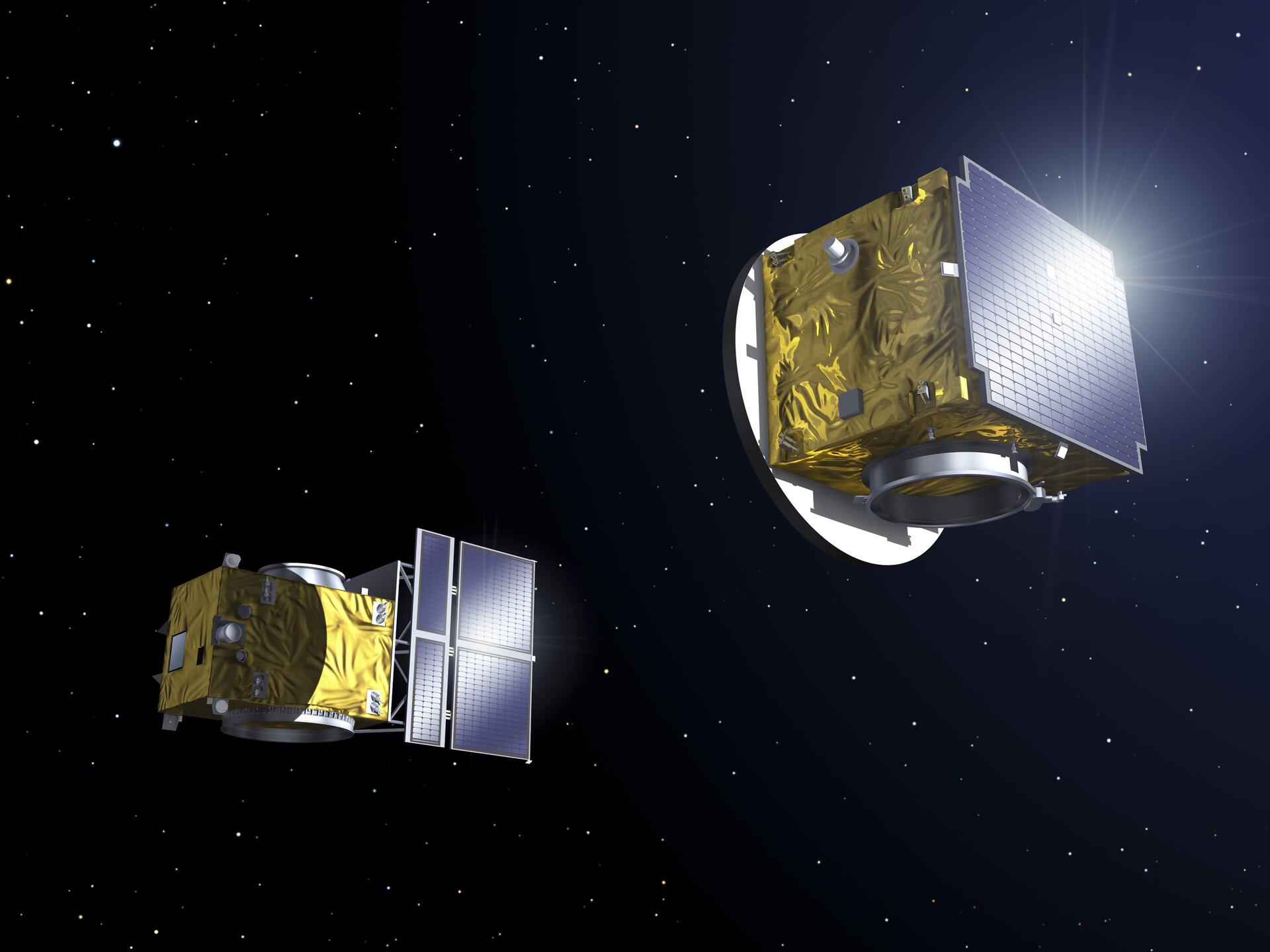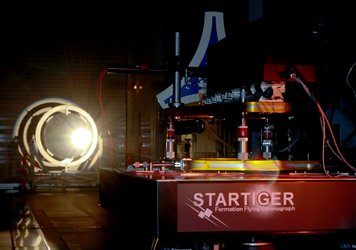Proba-3 precision formation-flyer takes next step to space
Proba-3, ESA’s first close formation-flying mission, recently moved to its next stage of development for a projected launch in 2016.
If successful, future missions could be created on a much larger scale at lower cost, using separate satellites that fly as one. Proba-3 will be a double satellite mission, maintaining formation to millimetre and arcsecond precision at a distance of 150 m or more. “In recent years, Europe’s multi-satellite missions have made significant progress,” said Agnes Mestreau-Garreau, ESA’s Proba-3 Project Manager.
“The Automated Transfer Vehicle supply vessel has demonstrated centimetre accuracy docking with the International Space Station, while Sweden’s Prisma mission has demonstrated formation flying for brief periods, maintaining 10 cm-scale accuracy over 10 m.
“Proba-3 is the next step in formation flying. Its two satellites will autonomously move in unison, without guidance from the ground.
In effect, the pair will be flying as a single rigid body like a virtual giant satellite.”

As is traditional for ESA’s Proba technology demonstrators, Proba-3 will also carry a scientific payload: a telescope to study the innermost layers of the Sun’s surrounding corona.
Normally this region of space is rendered invisible by glaring sunlight, but the smaller ‘occulter’ satellite will deliberately cast an artificial eclipse onto its larger ‘coronagraph’ counterpart.
“The quality of Proba-3’s scientific results will demonstrate the performance of our formation-flying techniques,” Agnes added.
The mission’s system definition phase – termed Phase-B1 by ESA – has been completed. With Phase-B2 – involving development and verification of formation-flying strategies and technologies needed to make the mission feasible – SENER is taking the lead as System Architect. ESA signed the Phase-B2 contract with the company on 29 March.
“Proba-3 is a very unconventional and interesting mission concept that combines highly challenging technologies,æ said Salvador Llorente, SENER’s Proba-3 Project Manager.
“Mastery of precise formation flying will allow the generation of large and reconfigurable ‘virtual structures’ in space that should actually exhibit greater stability with less deformation than current single satellites.
“We are looking forward to the opportunities for technology development and demonstration this phase opens up, and collaborative working with the wide range of expertise available in our project team – made up of nine companies from six different countries (Spain, Belgium, Sweden, Portugal, UK, Canada) – to achieve a solid result.

“This phase will demonstrate that the mission is not only feasible, but that it will accomplish its challenging technology demonstrations in an efficient way.
“It will conclude with the consolidated preliminary design and a prototype onboard software system.”
“The results of Phase-B2 will be applicable for any other formation-flying mission,” Agnes recounted.
“It’s an exciting subject, because it opens up the door to a whole new era of spacecraft engineering.
“Future missions could be assembled on a much larger scale, using separate individual satellites that fly as one.
“There are numerous potential uses, such as large antennas and long baseline telescope interferometry.”
Proba-3’s Phase-B2 will be followed by Phase-C/D – the final development and manufacture of the mission.







